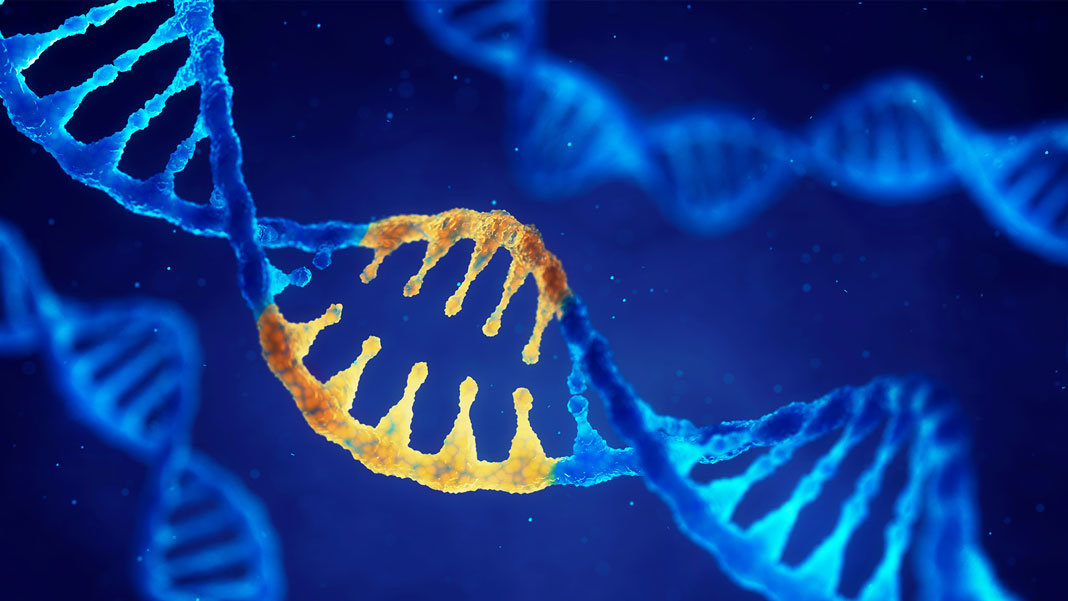Gene That Causes Cardiomyopathy And Blindness Discovered Along With Treatment Using Taurine Supplements
Source: Thailand Medical News Feb 01, 2020 5 years, 10 months, 4 weeks, 6 hours, 51 minutes ago
Swiss researchers from University Of Geneva (UNIGE) have discovered a new
gene that causes
blindness and
cardiomyopathy. They have also managed to halt the progression of eye disease and treat cardiac disease by administering a food
supplement called
taurine.

The human genome consists of 20,000
genes, all of which may be capable of triggering disease. It is estimated that there are 7,000 unknown
genes that cause recessive genetic diseases resulting from mutations in two copies of a
gene that have been inherited from each parent. Researchers at the University of Geneva (UNIGE), Switzerland, have recently identified 45 new
genes that cause
blindness or cognitive problems. The scientists focused in particular on the
SLC6A6 gene, which encodes a transporter protein that carries an amino acid essential for the functioning of the retina and cardiac muscle:
taurine. When there are pathogenic mutations of the
SLC6A6 gene, an individual will suffer from a lack of
taurine and will gradually lose his sight until he becomes blind within a few years and develops a weak heart.
The medical geneticists at the University of Geneva hypothesized that a
taurine supplement might make it possible to compensate for this deficiency. The
supplement was given to a young girl suffering from the disease to help stop the progression of her visual degeneration and to treat her
cardiomyopathy.
Typically recessive genetic diseases such as cystic fibrosis are the result of a mutation in the two copies of the same gene inherited from each parent. Researchers from UNIGE, working in collaboration with scientists from Pakistan, studied the genomes of 500 Pakistani families who had ill and healthy children in order to identify as many
genes as possible that cause these conditions.
Dr Stylianos Antonarakis, Emeritus Professor in UNIGE's Faculty of Medicine explained, "We looked at Pakistani families because consanguineous marriage is still a common practice, with 50 percent of marriages taking place between first cousins," "In fact, consanguinity increases the risk of developing a recessive genetic disease since about 12 percent of the genome is identical in cousins."
SLC6A6 Gene Discovered
The
gene was identified as a result of interest by researchers of a family in Pakistan : the two parents, healthy first cousins had four children, two of whom were sick: a 15-year-old boy, who lost all his sight in a few years, and a 4-year-old girl, who was gradually losing her sight but was still able to make out shapes and colors.
Dr Muhammad Ansar, a researcher in the Genetics Department in UNIGE's Faculty of Medicine told
Thailand Medical
00"> News, "With the help of the Khyber Medical University in Pakistan, we collected blood samples of each family member. Their genome sequencing showed that their illness was linked to a mutation of the
SLC6A6 gene."
This
gene produces a protein of the cell membrane that transports
taurine, an amino acid that is especially important for the functioning of the retina and cardiac muscle.
Dr Ansar added, "It's a dietary
supplement found in large quantities in certain energy drinks."
It was found that patients suffering from the disease have extremely low levels of
taurine in their blood. Professor Keith Henry of the University of North Dakota showed that the genetic abnormality in the family from Pakistan reduced the carrying capacity of
taurine to 15 percent of its normal level.
Disease reversible
The medical scientists speculated that it might be possible to block the progression of the disease by administering
taurine to the children. They brought the family to Geneva to conduct detailed investigations into this rare genetic disease. In addition to the progressive visual impairment, which was now unfortunately total in the case of the boy, the doctors diagnosed damage to the cardiac muscle in both children. The little girl fortunately still retained some residual vision.
As
taurine is a food
supplement rather than a medicine, the Swiss Ethics Commission agreed that it could be administered orally. "We gave 100 mg per kg of
taurine daily to the children to be continued over the long-term, and organized regular ophthalmologic and cardiac monitoring sessions in Pakistan," emphasizes Emmanuelle Ranza, a doctor and geneticist at University Hospitals Geneva (HUG) and UNIGE who was responsible for the clinical part of the study. The results quickly came about: in three days, the
taurine levels in their blood jumped from 6 to 85 μ mol/l, reaching normal thresholds. And, after two years, the
cardiomyopathy had completely disappeared in both children! In addition, the degeneration in the girl's sight was brought to a halt, and there was even an improvement, meaning she could move around by herself. Unfortunately, this development was not possible for the boy, who had already lost his entire retina.
Dr Antonarakis added, "These results are exceptional, because it's the first time a food
supplement given orally has been used to treat the retina and the heart successfully. This little girl has paved the way for a potential cure for newborns suffering from the same recessive disease. One patient can change the history of medicine!"
The researchers estimate that there are possibly 6,000 babies worldwide who might suffer from the same
SLC6A6-related disease, and around 300 in Europe and North America.
Dr Antonarakis further added, "Our goal now is to detect newborns affected by the condition at an early stage so they can be treated from birth with a
taurine supplement and potentially prevent the onset of symptoms."
The medical geneticists also aim to continue to identify new
genes that cause recessive diseases, especially since they now have proof that some of them can be treated effectively.
Reference : Muhammad Ansar et al. Taurine treatment of retinal degeneration and cardiomyopathy in a consanguineous family with SLC6A6 taurine transporter deficiency, Human Molecular Genetics (2019).
DOI: 10.1093/hmg/ddz303
